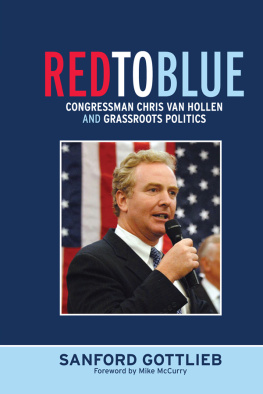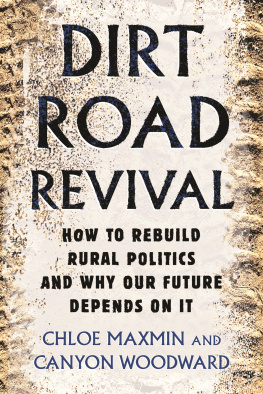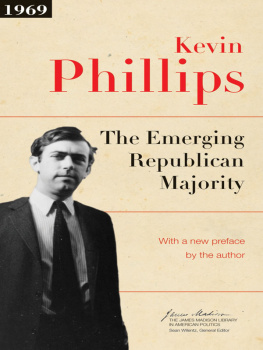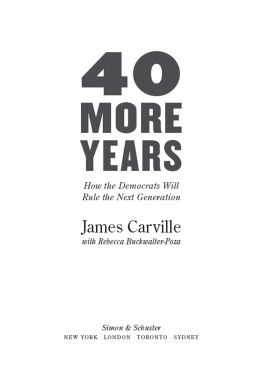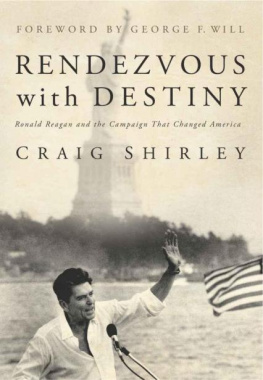First published 2009 by Paradigm Publishers
Published 2016 by Routledge
2 Park Square, Milton Park, Abingdon, Oxon OX14 4RN
711 Third Avenue, New York, NY 10017, USA
Routledge is an imprint of the Taylor & Francis Group, an informa business
Copyright 2009, Taylor & Francis.
All rights reserved. No part of this book may be reprinted or reproduced or utilised in any form or by any electronic, mechanical, or other means, now known or hereafter invented, including photocopying and recording, or in any information storage or retrieval system, without permission in writing from the publishers.
Notice:
Product or corporate names may be trademarks or registered trademarks, and are used only for identification and explanation without intent to infringe.
Library of Congress Cataloging-in-Publication Data
Gottlieb, Sanford.
Red to blue : Congressman Chris Van Hollen and grassroots politics /
Sanford Gottlieb.
p. cm.
Includes bibliographical references and index.
ISBN 978-1-59451-488-3 (hardcover : alk. paper) ISBN 978-1-59451-489-0
(pbk.: alk. paper)
1. Democratic Party (U.S.) 2. United States. Congress. House. Democratic
Congressional Campaign CommitteeLeadership. 3. Van Hollen, Chris, 1959
4. Politics, PracticalUnited States. 5. Right and left (Political
science)United StatesHistory. 6. United StatesPolitics and
government. I. Title.
JK2316.G67 2009
328.73092dc22
[B]
2008055984
Designed and Typeset by Straight Creek Bookmakers.
ISBN 13: 978-1-59451-488-3 (hbk)
ISBN 13: 978-1-59451-489-0 (pbk)
MIKE MCCURRY
C ATCH A GLIMPSE of Chris Van Hollen in his natural habitat of Kensington, Maryland, and you would not be wrong in thinking you are watching a typical suburban dad doing his thing pushing a cart at the local Safeway, coaching a kids soccer team on a school playground, worshiping at the neighborhood Methodist church with his wife and squirming children.
Van Hollens attachment to all things ordinary in this tranquil setting just beyond the infamous Beltway around our national capital belies the extraordinary things he has been a part of inside that Beltway. His election to Congress in 2002 is now, in retrospect, a clear indicator of the ways in which politics in the United States are being transformed in the new media age. And the emergence of this affable, wonkish suburban dad as one of the rising stars of the new Democratic leadership in Washington sketches the contours of changes in the way the country will govern itself in decades to come. It is that story Sandy Gottlieb has captured so well in this book one of the first of many stories that will be told about the changes coming to Washington.
Marylands Eighth Congressional District is not exactly a microcosm of the nation. As a result of reapportionment and demographic change, it has become a solidly blue piece of the mostly blue landscape of Maryland. There is much atypical about Montgomery County, Maryland, and the sliver of nearby Prince Georges County that constitute Van Hollens district. As a Washington Post report once noted, a candidate walking door to door might reasonably be asked a question about government regulation from a resident who actually wrote it. The presence of large federally funded research institutes and facilities (Bethesda Naval Hospital, the National Institutes of Health, the Food and Drug Administration, the National Institute of Standards and Technology) and the concentration of those employed by the federal government make the district unusually attuned to issues that impact national policymaking.
Yet several themes in the story of Chris Van Hollens victory in 2002 presage much of what has happened in the national political narrative of the twenty-first centurys first decade. For one, the liberal Republican Party of the Northeast has evaporated. U.S. Rep. Connie Morella whom Van Hollen defeated to earn his seat in Congresswas one of the first entrenched moderate Republicans to fall victim to the growing strength of the Democratic Party in the suburbs adjacent to and north of the Mason-Dixon Line. Few would have predicted a loss by such a personable and popular incumbent. Morellas defeat foreshadowed the difficulty northeastern Republicans would have in defending the conservative record compiled by the GO P in the 1990s.
Second, the growing ethnic diversity of the United States is well reflected in the composition of the Eighth District. Van Hollens constituency islike many other congressional electoratesfast approaching an equal division between white and minority voters, and the minority reveals an increasingly equal distribution among African Americans, Latino/as, and Asian Americans. The trend toward ethnic and racial diversity in the communities around Washington, D.C., derives from the presence of a large international community, but the changes happening in the counties around the capital are not unlike changes happening across the country. We are becoming a more diverse, multiethnic, and cosmopolitan nation, not just on our left and right coasts but across our heartland as well.
But finally, the very nature of politics and the techniques of persuasion that convince voters to cast ballots for one candidate versus another are also in the midst of radical change. The telltale signs of that change begin to emerge in the story of Chris Van Hollens rise to national prominence. Everything about how a candidate communicates with the voter is undergoing a transformation, driven largely by the technologies of the Internet. Van Hollen was one of the first candidates to understand how the technologies of the new politics and the new media could be applied to grassroots organizing at a very local level.
The changes happening in campaigns and elections also underscore a profound generational shift occurring in our national leadership. That story, for me, is a personal one as I compare my own time in politics with Chris Van Hollens. We are barely five years apart in ageI was born in the heart of the baby boom in 1954 and he at its tail end in 1959. But our experiences are vastly different.
I went to work as a young U.S. Senate aide in 1976 after graduating from college. The issues on the agenda of Jimmy Carters Washington were familiar to all: Social Security was jeopardized by near-term insolvency; Carter wore sweaters in the White House and asked us to turn down our thermostats because we lacked a national energy policy that would relieve our dependency on foreign oil; our students were leaving schools unprepared for the demands of a global economy, so we created the U.S. Department of Education to improve performance; millions of Americans lacked health insurance and access to doctors and medicine; we were struggling to project ideals of America in a dangerous world where conflicts erupted in places such as Iran and Afghanistan. There is a

